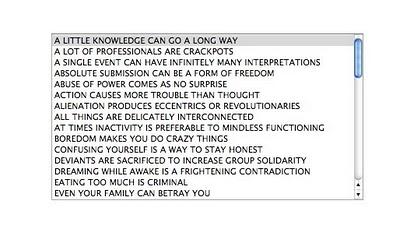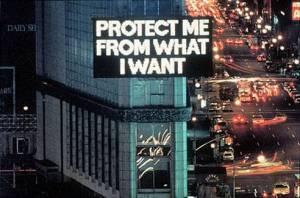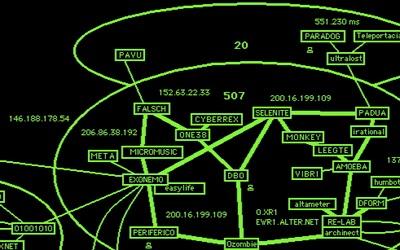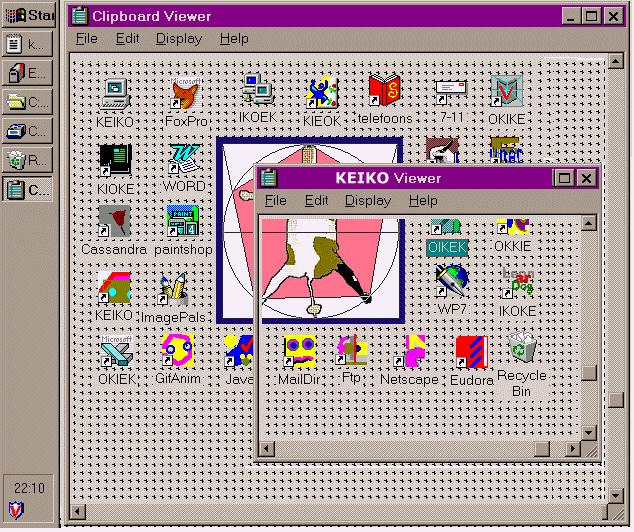Reading the manifesto-like “Introduction to Net Art” by Alexei Shulgin and Nathalie Bookchin, I find it obvious that, like any other art practices, Net Art has moved quite radically from its original principles. The « 0% Compromise » relating to the institutional bureaucracies and the academic world is, as the authors mention it themselves, no longer relevant to define Internet art. It is then true and false that Net art diffusion doesn’t need the institution. True, because the artist can put his artwork on the Internet and escape institutional process. But it might be the equivalent of hanging a drawing on a living room wall. If he is lucky, somebody will notice it and talk about it to someone else and so on and so forth. They are so much net artworks at this time that the institutional structure is almost necessary for the artist if he wants his work to be known and therefore, to earn money from it. So, in that way, it’s false that Internet art is independent from institution. The difference is that they are many strategies the artist can use to reach the institutional status. Websites like Turbulence, Panoplie or on-line magazines such as bleuOrange or CIAC…etc. are ways among many others to get known by the art community and maybe bring the Net Art into the “meat space” or the other way around.


Click on images for source
The “Net art” confusion
They are many words employed to talk about Net art practices : hypermedia art, e-art, Web art, Virtual art, Digital Art, Interactive art…etc. I won’t define and situate all of them here, but they all come with a specific ideology and from different domains (artistic, academic, scientific). Net Art is then a very particular word, with a specific origin (Pitz Shultz followed by a little group of artists including Alexei Shulgin). The artists picked that word to represent their own practices, so they got to define it. But then the word has been used for many purposes. There is, therefore, a confusion in between Net art as a specific ideology claimed by a small group of artists in the ‘90 and Internet art in general, meaning all the practices using Internet both as a medium and as a media for their work. Another confusion comes through for those who don’t know at all what Net art is and sometimes think it is the result of paintings being scanned and added to a website.
Art and everyday life
I don’t really believe that “the utopian aim of closing the ever widening gap between art and everyday life” has worked out very well with the early Net art. Falling on rhyzomatic Jodi.org website or even on Adaweb exhibition one is not likely to understand what is going on. I think this rapprochement is more efficient today, with Web 2.0 user-friendly interfaces which allow everybody to create a blog, an island on Second Life, multiple identities on Facebook, MySpace..etc. They can also make an interactive Website quite easily and do it for different purposes (for their job, hobbies, dating). At the same time, it allowed many more people to practice Net art. Every week if not everyday, everybody experiences interactivity. So what, now, is specific to Internet art ?

Internet art Criteria
Searchers and art historians not only aim to preserve Net art because of the obsolescence of the technology but also to classify the artworks in order to theorize them. But nowadays, it’s getting really hard to differentiate between Design and interactive artwork, "normal" blog and litterary blog, pornography and identity fictions (i.e. Anacam). People implicated in the process of institutionalization of Net art, in a way or another, have to make choices such as what is “art”. This question really hides another absurd one, which is: what is good art? And as the old criteria from art history don’t seem very relevant for Internet art, we do it with very obscure criteria and in very different ways.
Anne Cauquelin has, as a criterium, the idea that the net artwork must integrate a critic of the medium (Internet) or what we could call a formalism (an artwork that shows the property of the medium). Here we go! The old war between formalism and figuration! I read a book chapter last week in which the author argues that traditional art history criteria and Panofsky’s artwork analysis work well on hypermedia artwork (criteria : technical elements, formal elements, compositional elements, display, role of the spectator)...I won't comment. Others could rely on the quality of the writing, image or sound depending on their background and sensitivity. Others could rather evaluate the interactivity. They are as much Internet art histories as people writing it! The funny thing about it is that almost all of them have this “holistic” approach to their theory.
Aesthetic criteria, as they are created in a holistic purpose, are always obscure!!!
end

PS : Looking at the artworks from the on-line exhibition “Desktop is”, I wonder how it would be today to gather pictures from different desktops. I always like to sneak at people's desktop as it reveals something intimate!

